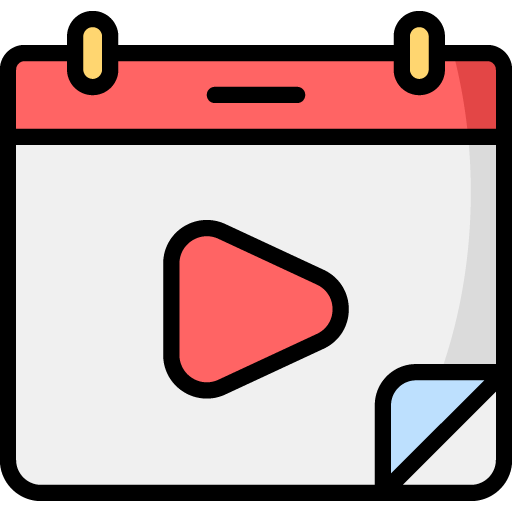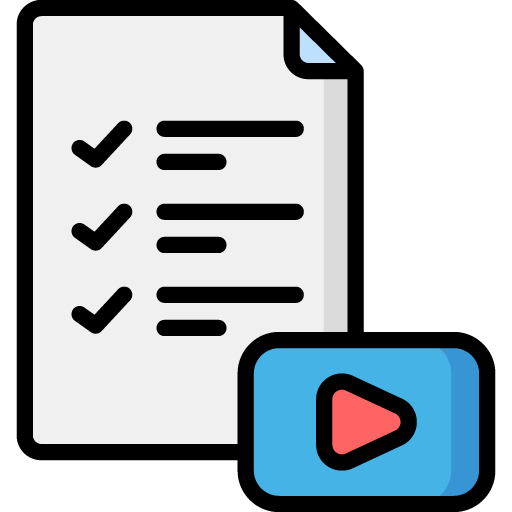How to Create a Strategic Plan for Your YouTube Content That Aligns With Your Goals
Developing a YouTube Content Strategy
How to Create a Strategic Plan for Your YouTube Content That Aligns With Your Goals
YouTube has become one of the most powerful platforms for content creators, businesses, and brands. With over 2.7 billion active users, the opportunity to reach a massive audience is unmatched. However, simply uploading videos without a clear strategy can result in wasted effort, poor engagement, and slow growth.
A well-defined YouTube content strategy helps you create content that aligns with your goals, engages the right audience, and optimizes your channel for success. Whether you’re looking to build brand awareness, generate revenue, or establish authority in your niche, a strategic approach is essential.
In this guide, we’ll walk you through the steps to develop a winning YouTube content strategy, from setting clear goals to optimizing videos for SEO and maximizing engagement.
Defining Your YouTube Goals
Before creating content, you need to define your purpose and objectives. A well-structured strategy aligns with your personal brand or business goals. Here are common YouTube goals:
- Brand Awareness: Growing your audience and making your brand more recognizable
- Monetization: Earning revenue through ads, sponsorships, and memberships
- Lead Generation: Driving traffic to a website, email list, or sales funnel
- Community Engagement: Building a loyal following and interacting with viewers
- Education & Authority: Establishing credibility as an expert in your industry
Set SMART goals (Specific, Measurable, Achievable, Relevant, and Time-bound). For example:
- “Gain 10,000 subscribers in six months” (Measurable & Time-bound)
- “Increase watch time by 30% in three months” (Specific & Achievable)
Having clear goals will shape the type of content you produce and how you measure success.
Understanding Your Target Audience
Knowing who you’re creating content for is crucial. A well-defined target audience helps you tailor content that resonates with viewers, increasing engagement and retention.
How to Identify Your Ideal Viewers:
- Demographics: Age, gender, location, interests
- Psychographics: Values, challenges, pain points
- Viewing Behavior: What kind of content they watch, engagement patterns
How to Research Your Audience:
- Use YouTube Analytics to check watch time, audience retention, and demographics
- Analyze Competitors by studying their most successful videos and comments
- Engage With Viewers through polls, comments, and community posts
Once you define your audience, you can create content that speaks directly to their needs and interests.
Choosing a Niche and Content Themes
A niche is a specialized topic you focus on, which helps you stand out in the crowded YouTube space. Without a clear niche, your content may feel scattered, making it harder to attract and retain subscribers.
How to Pick a Niche:
- Follow your passion – Choose a topic you enjoy creating content about
- Find a gap in the market – Research what’s missing in your industry
- Check demand – Use tools like Google Trends and YouTube search suggestions
Examples of Content Themes:
- Tech & Reviews: Gadget comparisons, product unboxings
- Education & Tutorials: How-to guides, online courses
- Lifestyle & Vlogs: Daily routines, personal growth
- Entertainment & Commentary: Reaction videos, storytelling
Your niche should provide value and have enough content opportunities for long-term growth.
Crafting an Effective Content Plan
Consistency is key to growing on YouTube. A well-planned content calendar keeps you organized and ensures you deliver valuable content consistently.
Steps to Creating a Content Plan:
- Decide on Posting-Frequency: (e.g., weekly, bi-weekly)
- Balance Evergreen & Trending Content: Mix long-term valuable videos with timely topics
- Use a Content Calendar: Tools like Trello, Notion, or Google Sheets help organize ideas
Types of Videos to Include:
- Educational (How-to, Tutorials) – High retention and value-driven
- Entertaining (Vlogs, Challenges) – Engages and builds personality
- Informational (News, Reviews) – Keeps audience updated
Having a structured plan keeps your content strategy consistent and scalable.
Optimizing for YouTube SEO
YouTube is a search engine—meaning optimizing your content for SEO increases visibility.
SEO Optimization Strategies:
- Keyword Research: Use tools like TubeBuddy, VidIQ, or YouTube Autocomplete
- Title Optimization: Use keywords naturally (e.g., “Best Budget Cameras for YouTube in 2024”)
- Compelling Descriptions: Include keywords in the first 2 lines, add timestamps and links
- Tags & Hashtags: Use relevant, high-ranking keywords
- Custom Thumbnails: Bright, clear images with readable text improve click-through rates (CTR)
Optimized content ranks better in search results, leading to higher views and engagement.
Production & Editing Best Practices
High-quality content keeps viewers engaged. You don’t need expensive equipment, but proper production improves video performance.
Basic Equipment Needed:
- Camera: Smartphone or DSLR
- Microphone: Lavalier or USB mic for clear audio
- Lighting: Ring light or softbox for better video quality
Editing Tips:
- Cut unnecessary pauses to improve pacing
- Add subtitles and graphics for accessibility
- Use engaging visuals to enhance storytelling
Well-produced videos retain viewers longer, improving YouTube’s algorithm ranking.
Growing Your Audience & Engagement
How to Promote Your Videos Effectively:
- Share on Social Media: Post on Instagram, Twitter, Facebook
- Collaborate With Other Creators: Cross-promote with similar channels
- Engage in Comments & Community Posts: Build relationships with viewers
Boosting Engagement:
- Ask Questions: Encourage comments by asking for opinions
- Use Calls-to-Action (CTA): Like, comment, and subscribe prompts
- Host Giveaways: Incentivize participation
Audience interaction leads to stronger community growth and higher retention rates.
Monetization & Scaling Strategies
Once your channel gains traction, monetization becomes an option.
Ways to Monetize on YouTube:
- YouTube Partner Program: Earn ad revenue once you reach 1,000 subscribers & 4,000 watch hours
- Affiliate Marketing: Promote products with referral links
- Sponsorships: Brands pay for promotions
- Merch & Memberships: Sell branded products or offer exclusive content
Diversifying income streams makes your YouTube channel more sustainable.
Developing a YouTube content strategy requires clear goals, audience research, consistent content planning, and optimization for growth.
By following these key steps, you can create engaging, high-quality content that aligns with your objectives and resonates with viewers.
Next Steps:
- Define your YouTube goals
- Research your target audience
- Plan valuable content and optimize for SEO
- Stay consistent and engage with your community
Are you ready to take your YouTube strategy to the next level? Start implementing these tactics today and watch your channel grow! 🚀







 Edit Your Footage
Edit Your Footage
Leave a Reply